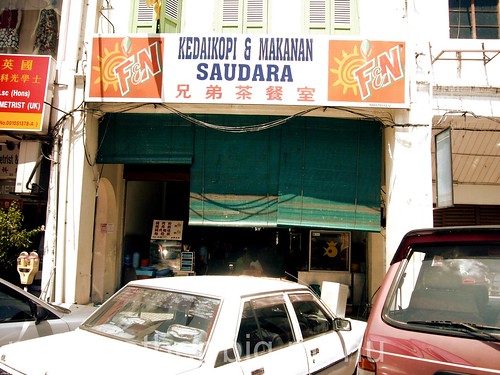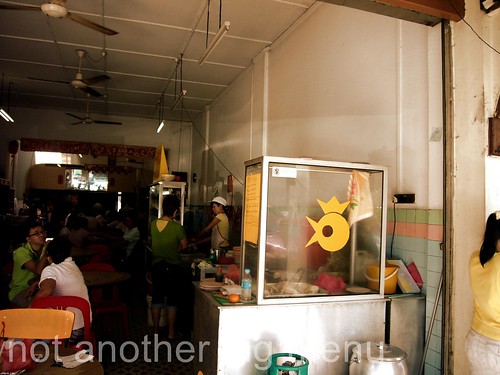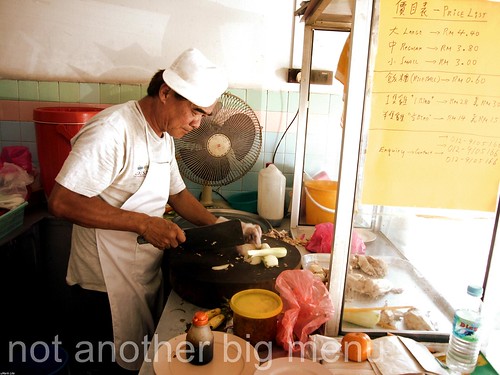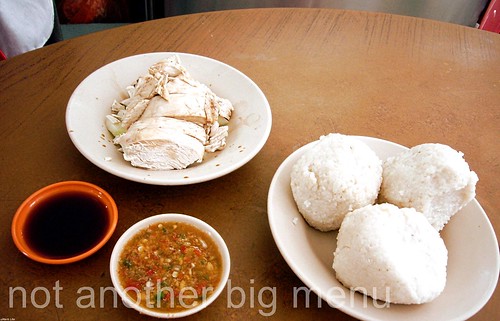Friday, 23 January 2009
Saudara Chicken Rice (balls), Seremban, Malaysia
The observant among you might note that this blog is mainly about London restaurants. Seremban is not a new district in London (in case you’re worried about not keeping up to date with the latest edition of ‘New Districts in London’).
Introducing the new Guest Blogger to this blog, aptly named Guest Blogger (or Awesome as he is known to his friends). Contributing from Malaysia, he’ll be reviewing the well-known well-kept secret restaurants (they do exist) in Malaysia, and I’ll be basing the post on his information.
Where else better to start than with the Malaysian favourite – Chicken Rice. But before I go on, here is a short but interesting theory.
The Economist Big Mac Theory – Burgernomics
For those of you interested in the intriguing concept of the Retail Price Index, Purchasing Power Parity (PPP) and FX rates, you’ll know that the Economist has this thing called the Big Mac index.
This theory basically starts off by saying that a Big Mac in one country should cost the same as a Big Mac in another country, when the currencies have been translated, otherwise one of the currencies is over/under-valued.
For example, if a Big Mac in the US costs US$3.60, and the current exchange rate is US$1.39/£, I’d expect to be paying £2.60 for the same Big Mac in the UK.
However, a Big Mac in the UK actually only costs £2.29 which means that the Sterling is currently undervalued (so true).
The Chicken Rice Theory – Chickenomics
Now, using a similar concept (though not quite), I used to have what I call the Chicken Rice Theory or Benchmark. This is where I compare the prices of food using the price of a portion of chicken rice as the base, and see if the item is worth its value or not.
For example, if a packet of chicken rice costs RM3 and a Subway sandwich costs RM21, the sandwich is a whopping 7 on the Chickenomics scale, making this a No-No expense.
Anything with a Chickenomics scale of 3 and below was considered worth-it, i.e. RM9 and below.
What does this have to do with this review???
Not much, but it’s about chicken rice, so I thought I’d put it in.
This is a shoplot front, which looks alot like other shoplot fronts of shops in Malaysia. Thus, the telling bit is the sign above the entrace which says:
Kedai (shop) Kopi (coffee) & (and) Makanan (food) Saudara (relative)
Shop Coffee and Food Relative actually translates to Saudara Coffeeshop and Restaurant (Saudara being the name and not the literal meaning).
This is what I love about Malaysian shops. You can just sit there for hours without being told you have to:
a) Book a table in advance
b) Order food, as drinks are not available without food
c) Tip (at 10% or preferably 12.5%)
This is the guy doing the cooking and pretty much everything else in the shop. Guest Blogger Awesome actually interviewed the guy, and found out that he’s called Mr Tan and that he’s been learning his skills in this trade from his father, who started the business in 1952.
According to Mr Tan, what he serves is Hainanese Chicken Rice, which is VERY different from Cantonese Chicken Rice. What is the difference, you ask.
Hainanese Chicken Rice is done in the no-frills style, as in the chicken is pretty much boiled in hot water, and taken straight out when cooked. None of that making it look pretty, or coating in flavoured oil business.
(At which point I guess the frills bit is the coating in flavoured oil business.)
Chicken rice balls with chicken (from RM3 to RM4)
Thus, the chicken is served as it comes, and because of that, it’s important that only the freshest chicken for this, preferably female as it has a sweeter and smoother tasting meat compared to the male chicken.
However, because there is no flavoured oil around the chicken, it dries up quicker and becomes smaller. Since the chicken is female, it is also smaller than the male chicken which means that on the whole, it’s more expensive the Hainanese way.
The other difference between the Hainanese and Cantonese version is that the Hainanese version of the rice comes in balls. Chewy rice condensed into a ball, making it even tastier and packed with yumminess.
And finally, how is it eaten? Dunked in lots and lots of chilli sauce, and soy sauce!
Google Maps to here!
View Larger Map






1 comment:
Chicken rice economics, hilarious!
Now to the food, drawing comparison with the Cantonese white cut chicken, I am certain it will taste good. Drool...
Post a Comment